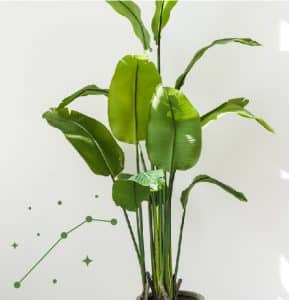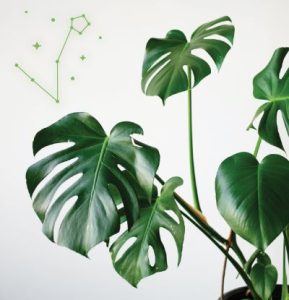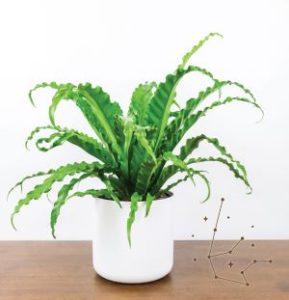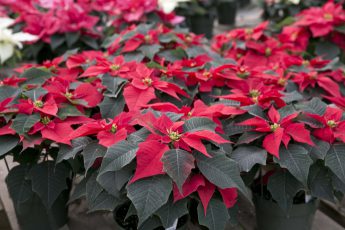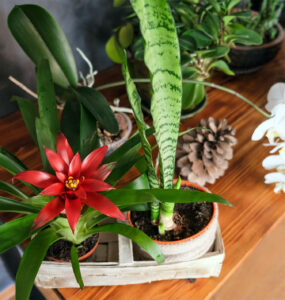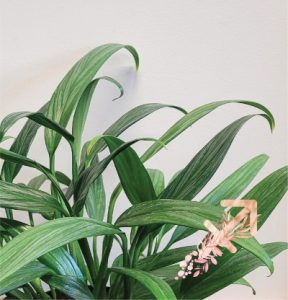
Epiphytes: Survival Ninjas
by Rob Sproule
In 2004 I spent a bewildering month submerged in the deep Choco rainforest, about 30km from the northern Ecuadorian coast. The Choco, cut off from the Amazon by the Andes, is one of the most biologically diverse places on the planet. I spent my days scrambling across fallen trees to build an orchid garden at the Bilsa botanical reserve, trees which hosted more native plant species on their bark than I’d likely find within 10 miles of my home.
Dense, difficult to navigate and with cloud-forest levels of humidity, I discovered life so plentiful there that it piled up on itself and attached to every conceivable surface. Every inch of tree bark was festooned with blanketing mosses, precarious orchids, and stately bromeliads. Caring for Bromeliads
With scant soil and a feverishly competitive forest floor, plants had evolved to literally rise above soil, sucking nutrients from the air around them like fish get oxygen.
Epiphytes 101
As you’ve probably guessed, I get pretty excited about this stuff. Epiphytes are survival ninjas, vaulting skywards to earth to claim new territory. They’re shrouded in mystery. With the majority of the world’s epiphytes lingering high in rainforest and cloud forest canopies, species new to science are being found regularly.
As some of the most highly evolved plants in the world, epiphytes have developed the ability to pull moisture and nutrients from ambient air in through their leaves. Bromeliads, orchids, ferns and mosses cling to trees and rocks with uniquely evolved roots and literally pull their food from the air.
Nature develops astonishing interconnections. Giant bromeliads, holding gallons of water, become nurseries for tree frogs, tropical crabs, and even spiders to raise their young in the relative safety of the canopy. Other epiphytes boast broad hollow bases that become homes for tropical ants. In exchange for a treehouse perched safely above most predators, the ants protect their host from leaf munching invaders.
Canadian Epiphytes
You don’t need to go into the deep dark jungle to find epiphytes. The next time you’re in the mountains or foothills, watch for Witch’s Hair lichen (Alectoria sarmentosa) hanging matted and messy from the pine and spruce.
Ascend into higher elevations and watch the Witch’s Hair turn into the bright yellow, tufted Wolf’s Bane lichen (Letharia vulpinia). Pretty to look at, Wolf’s lichen is a highly toxic epiphyte that Native peoples used to make dies and even poisonous arrows.
Our Pacific coast is an epiphytic paradise, with ferns and lichens increasingly crowding trees and stumps as you travel north from Vancouver and Victoria. The next time you’re there, take a walk through the botanical garden at UBC or dip into the interior of Stanley Park. Look at the host of plants growing up and down the trees and let yourself be amazed at their raw ability to survive.
Everyday Epiphytes
Epiphytes are all around us. Most of the orchids we see on store shelves are epiphytic, including the ubiquitous Phaleanopsis or “moth” orchid. While it’s sold potted, it’s roots function more to grip branches than to take in nutrients. A lot of people ask if they should snip off the random “tentacle” roots springing out of the pot, to which I reply an emphatic “no.” Those tentacles are actually air-roots and pull in essential nutrients from the air.
Garden Centres commonly sell epiphytes as “airplants” or tillansia (a genus in the bromeliad family). The term airplants is a misnomer that’s led to the demise of countless plants when their owners assume they don’t need to be watered. In our dry Prairie air, we need to mist to give our airplants supplemental water to keep them healthy.




